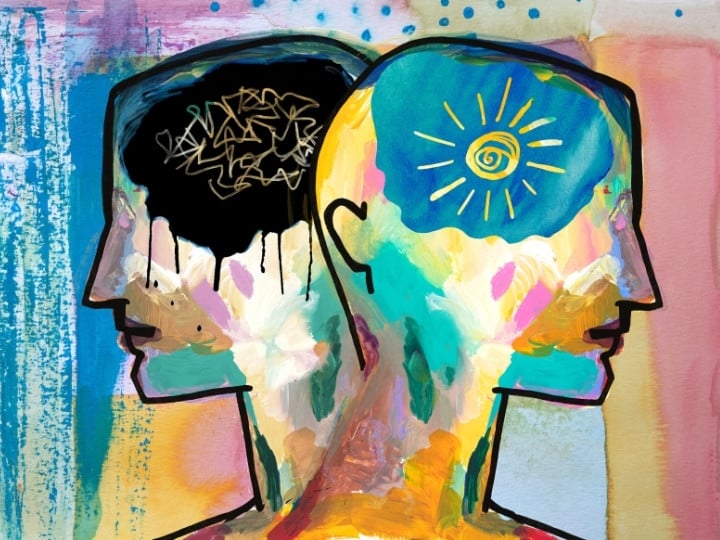-

-
-
Loading

Loading


Bipolar disorder, one of the most diagnosed mental health conditions after anxiety and clinical depression, affects about 2.8% of the global population. Characterized by extreme mood swings, the disorder can significantly impact an individual’s daily life, relationships, and overall well-being. What is Bipolar Disorder? Bipolar disorder, previously known as manic depression, is a mental health condition marked by alternating episodes of mania (or hypomania) and depression. These episodes can last for days, weeks, or even months, and their intensity varies from person to person. During manic episodes, individuals experience emotional highs, characterized by euphoria, increased energy, and impulsive behaviors, while depressive episodes bring feelings of sadness, hopelessness, and loss of interest in daily activities. The disorder is more than just moodiness; it’s a serious mental illness that can disrupt relationships, careers, and overall quality of life. According to the World Health Organization (WHO), bipolar disorder affects approximately 45 million people worldwide. Despite its prevalence, it remains widely misunderstood, often stigmatized, and sometimes misdiagnosed. Types of Bipolar Disorder Bipolar I Disorder: This type is defined by at least one manic episode, which may be preceded or followed by hypomanic or depressive episodes. Mania can be severe enough to require hospitalization. Bipolar II Disorder: Characterized by a pattern of depressive episodes and hypomanic episodes, but not full-blown mania. Cyclothymic Disorder: A milder form involving periods of hypomanic symptoms and depressive symptoms lasting for at least two years. Other Specified and Unspecified Bipolar Disorders: Symptoms that do not fit the above categories but still cause significant distress. Symptoms of Bipolar Disorder Manic Episodes: Elevated mood Increased energy Reduced need for sleep Impulsivity Risky behavior Depressive Episodes: Persistent sadness Loss of interest in activities Fatigue Feelings of worthlessness Suicidal thoughts Real-Life Stories: Onija Andrew Robbins and Kanye West Onija Andrew Robbins “Call my husband Nidal,” Robbins kept saying throughout Wednesday night as she sat in the parking lot of Ali Arcade. (Image via Express) Onija Andrew Robbins, a 35-year-old American woman, found herself at the center of an emotional whirlwind that ultimately led to her diagnosis of bipolar disorder. Robbins, a mother of two, traveled to Karachi, Pakistan, driven by her intense feelings for a 19-year-old Pakistani man, Nidal Ahmed Memon. She claims to have married him online via the International Utah website. Despite her visa expiring, Robbins refuses to return home without Nidal, who has been in hiding due to the media spotlight surrounding their relationship. Robbins is currently receiving treatment for bipolar disorder at the Special Ward of Jinnah Postgraduate Medical Centre (JPMC) in Karachi. The medical staff at JPMC has been continuously evaluating her condition, a challenge Robbins has faced both in the United States and abroad. Her symptoms, including periods of heightened energy and emotional instability, led her to seek help, eventually resulting in her bipolar disorder diagnosis. According to Robbins, her love-sick emotions went beyond the ups and downs of a typical romantic relationship. "Her symptoms, which included periods of heightened energy and deep despair, prompted her to seek medical help," as reported by The Express Tribune. For Robbins, the diagnosis was both a revelation and a challenge. It explained her erratic behavior and emotional instability. Kanye West’s Journey: A Public Struggle with Bipolar Disorder Getty Images Kanye West, now known as Ye, has been open about his struggles with bipolar disorder, which he was diagnosed with in 2018. In the past, Ye referred to his bipolar disorder as his “superpower,” though recently, he has questioned the accuracy of this diagnosis. During a podcast with Justin Laboy, Ye revealed that he now believes he may actually be autistic. "I was misdiagnosed with bipolar disorder,” Ye explained during the podcast. He further clarified that his wife encouraged him to see a doctor who had also worked with Justin Bieber, leading him to reconsider his diagnosis. Over the years, Ye’s public struggles with mental health have garnered widespread media attention, from his social media outbursts to controversial statements. Despite the ongoing concerns over his mental well-being, Ye has continued to speak publicly about the challenges of living with a condition that has shaped much of his career and personal life. Living with Bipolar Disorder Living with bipolar disorder requires a combination of medication, therapy, and lifestyle adjustments. Early diagnosis and treatment are crucial for managing symptoms and improving the quality of life. However, stigma and misinformation often prevent individuals from seeking help. Robbins’ story is a testament to the importance of seeking help and the power of breaking the stigma surrounding mental health. As Robbins has shown, bipolar disorder does not discriminate. It can affect anyone, regardless of their background or personal experiences. However, societal stigma often prevents individuals from seeking help, as many fear being labeled as "unstable" or "unpredictable." This can lead to isolation and untreated symptoms. Experts emphasize the importance of early diagnosis and treatment. With the right combination of medication, therapy, and lifestyle changes, individuals with bipolar disorder can lead fulfilling lives.
if you want to get more information about this news then click on below link
More Detail